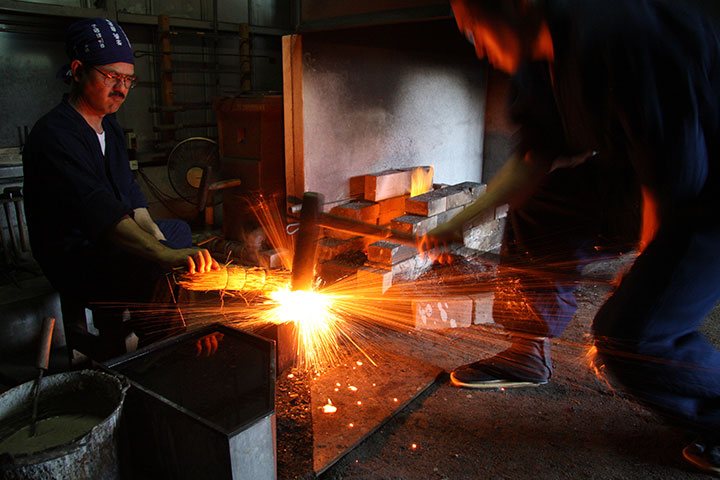MASTER SWORDSMITH
KUBO YOSHIHIRO

A MODERN MASTER OF
OUR GENERATION:
KUBO YOSHIHIRO
One of Master Swordsmith Kubo Yoshihiro’s goals is to recreate swords with the same characteristics of those produced 800 years ago. A task that is thought to be impossible with modern technology and materials. However, in 2007, he succeeded in reproducing Utsuri, a misty activity often seen in Bizen swords of the Kamakura period (1185-1336). That sword won the special prize, the NBTHK Chairman’s Award, at the Newly Made Swords Exhibition of that year.
Kubo, who has an analytical mind, emphasizes the importance of application of theory when trying to recreate old sword techniques, and conducts repeated scientific experiments. In 2005, he published a paper on the production and quality of tatara steel manufacturing in the Japan Iron and Steel Institute’s journal, Tetsu to Hagane. He takes a scientific approach to sword making by researching the components and ratio of iron sand to charcoal.
He is also passionate about passing on the knowledge and skills he has acquired to the next generation. His skill and dedication are widely recognized, and there are hopes that he will be designated a Living National Treasure in the future. He is without doubt a modern master craftsman of our generation.